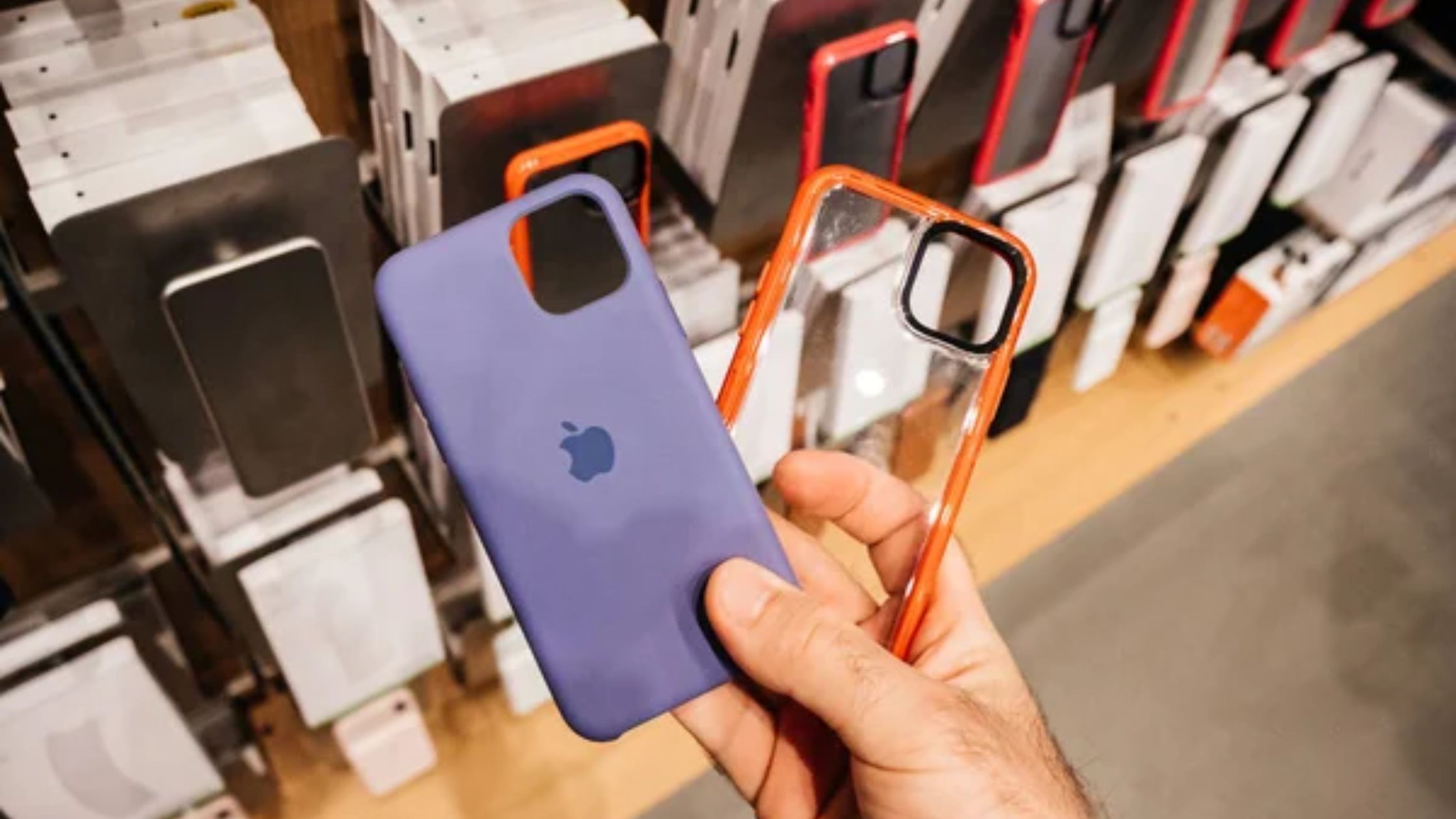Your phone case goes everywhere you do—but is it actually working for you? It’s easy to grab something that looks good or fits a trend, but once it starts slipping off wireless chargers or feels awkward in your pocket, the shine wears off quickly.
The truth is, most people choose a case based on how it looks, not how it holds up in daily life. They forget about grip, comfort, button response, or even whether it’s built to handle an accidental drop. And while style is important, your phone case should feel like a helpful tool—not an afterthought.
If you’re still weighing your options, you might want to start by exploring some of the top phone case brands that blend protection with personality. From there, this guide will help you narrow it down and find the one that actually fits how you live, work, and carry your phone every day.
Know What Your Phone Case Needs to Handle

Before diving into colors, textures, or cool features, take a step back and think about your day-to-day. Your phone goes through more than you realize—so your case should be built for the kind of moments it’s most likely to face.
Start With Your Daily Habits
Where does your phone spend most of its time? In a back pocket? A gym bag? Clipped inside a work backpack or bouncing around in the car cupholder? These tiny details matter more than you think. If you’re someone who’s always on the move, works in unpredictable environments, or lives with kids and pets, you’ll want a case that prioritizes drop protection and durability.
On the other hand, if your phone lives on a desk all day and rarely leaves the house, you might get away with something slimmer and lighter—just enough to prevent scratches without going overboard.
Prioritize Use Over Aesthetics (at First)
Looks can be updated easily, but protection is what saves your phone when it matters. A slim or stylish case isn’t much help if it cracks at the first drop. Think about how often you reach for your phone, where you usually use it, and what kind of coverage makes the most sense.
If rugged protection tops your list, it’s worth looking into cases designed for impact resistance. You’ll find some that blend sleek design with military-grade durability—proving you don’t have to sacrifice function for a clean look.
For a closer look at one of the most trusted names in this space, here’s why OtterBox is still considered the gold standard in everyday drop protection.
Choose the Case Type That Matches Your Routine
Once you’ve thought about how you use your phone, the next step is choosing a case type that supports that lifestyle. From ultra-slim to seriously rugged, each category has its perks—and a few trade-offs. The right fit comes down to balancing your needs with what you’re comfortable carrying every day.
Understand What Case Categories Actually Mean
Not all cases are built the same, and the terms used to describe them can be confusing. Here’s a breakdown of the most common types:
- Slim Cases – Lightweight and sleek, great for minimalists or those who want their phone to slide easily into pockets. They offer basic scratch and bump protection but may lack shock resistance.
- Rugged Cases – Designed for impact protection, often with reinforced corners and thicker materials. Ideal for outdoor use, work environments, or anyone prone to dropping their phone.
- Clear Cases – Show off your phone’s original design while offering light to moderate protection. Some include anti-yellowing treatments to stay fresh longer.
- Wallet or Folio Cases – Combine a case with storage for cards or cash. Convenient for those who like carrying less, but may add bulk.
- Magnetic/Mount-Ready Cases – Compatible with accessories like magnetic chargers or mounts, ideal for users who rely on their phone in the car or at their desk.
Each type serves a different purpose, so think about which scenario fits your life best.
The Way It Feels Matters More Than You Think
It’s easy to focus on specs, but the way a case feels in your hand makes a big difference. Some cases may offer excellent protection but feel too bulky or uncomfortable for one-handed use. Look for features like textured sides for extra grip, responsive side buttons, and raised edges around the screen and camera for added peace of mind.
In the end, comfort and confidence matter just as much as how your case looks on your phone. If you’re not happy holding it, you won’t love using it.
Material and Build Matter More Than Branding

It’s tempting to focus on the logo or aesthetic, but what really determines how a case performs is what it’s made of—and how it’s built. The materials used and the way the case is constructed will tell you more about its durability and daily comfort than any marketing claim.
Get Familiar With What’s Under the Surface
Here’s a breakdown of common materials and what they actually do:
- TPU (Thermoplastic Polyurethane) – Flexible, durable, and shock-absorbent. Often used for the inner layer of dual-layer cases.
- Polycarbonate – Hard plastic that resists scratches and adds structure. Frequently used as an outer shell in rugged designs.
- Silicone – Soft and grippy, but can attract lint. Good for comfort and basic protection.
- Leather or Faux Leather – Adds a premium feel, ages well, and provides a soft exterior—but less impact-resistant.
- Hybrid Combinations – The best of both worlds. These cases use a mix of materials to balance comfort, strength, and flexibility.
The right material makes a big difference in how your phone feels in your hand, how much protection it offers, and how long it holds up after daily use.
Certifications and Real Durability
Some cases come with MIL-STD-810G certification, which means they’ve passed a series of military-standard drop tests from multiple angles and heights. But certifications alone aren’t everything—look for brands that also show real-world testing or back their claims with video demonstrations and transparent data.
For a closer look at how durability-focused design really holds up, you can check out this in-depth review of OtterBox—a brand known for setting the bar on rugged reliability.
Style Still Matters—But Let It Work With You
Function is important, but that doesn’t mean you have to sacrifice personal expression. A phone case can still reflect your style—as long as it’s not working against your daily needs. The goal is to find something that looks like you but also holds up when life gets a little messy.
Express Your Personality Without Sacrificing Usability
The right case adds flair without getting in the way. Matte finishes, bold prints, neutral tones, and subtle textures all give you options that fit your personal style. Look for designs that won’t show every fingerprint or scuff after a week of use. Glossy or patterned finishes can be fun, but make sure the case still offers a secure grip and doesn’t slide off smooth surfaces.
If you’re looking for brands that strike a balance between style and protection, you’ll find plenty of standouts in this guide to the best phone case brands.
Keep It Fresh Without Overthinking It
If you like to switch up your style often, consider rotating your cases by season or mood. Some people treat phone cases like accessories—different looks for different outfits or events. Lightweight designs and affordable options make this easy without compromising basic protection.
Subscription-based models or bundle deals are great ways to refresh your case collection without needing to shop constantly. This kind of flexibility lets you keep things fun, without forgetting function.
Smart Buying Starts With the Right Questions

It’s easy to get pulled in by pretty designs or glowing reviews—but buying smart means asking the questions that actually affect how your case performs every day. A little thought before checkout can save you from returns, regrets, or a cracked screen.
Don’t Just Trust Star Ratings
Five stars might look good, but what are people really saying? Go beyond the numbers and skim for reviews that talk about real-life usage: grip quality, drop survival, wireless charging compatibility, and comfort during one-handed use. Video reviews and unboxings can give you a better feel for the product than product photos ever will.
If a brand is confident in its durability, they’ll often show drop tests or explain how the case is built. That transparency speaks volumes—and usually signals a higher quality product. For a closer look at one of the most trusted names, here’s why OtterBox is still considered the gold standard.
Final Checks Before You Buy
Before you click “buy,” make sure the case checks a few essential boxes:
- Wireless charging: Will it work with your current charger? Is MagSafe supported if you need it?
- Port and button access: Are the cutouts aligned and the buttons responsive?
- Compatibility with accessories: Will the case work with your car mount, stand, or magnetic wallet?
These details might seem small, but they’re the difference between a case that just looks good—and one that actually works for you.
Conclusion
Finding the right phone case isn’t just about picking one that looks good—it’s about choosing one that fits into your daily routine without getting in the way. The right case should support how you use your phone, whether that means extra grip during your commute, shock absorption for active days, or a design that feels like an extension of your personal style.
Start by thinking about your habits. Consider where your phone goes, how often you drop it, and what features actually matter to you—like wireless charging compatibility or button responsiveness. From there, it’s easier to spot the case that won’t just protect your device, but will also feel like the right fit in your hand, your pocket, and your life.
When you find that balance between form and function, your phone case stops being just an accessory—and becomes something that actually works for you.




